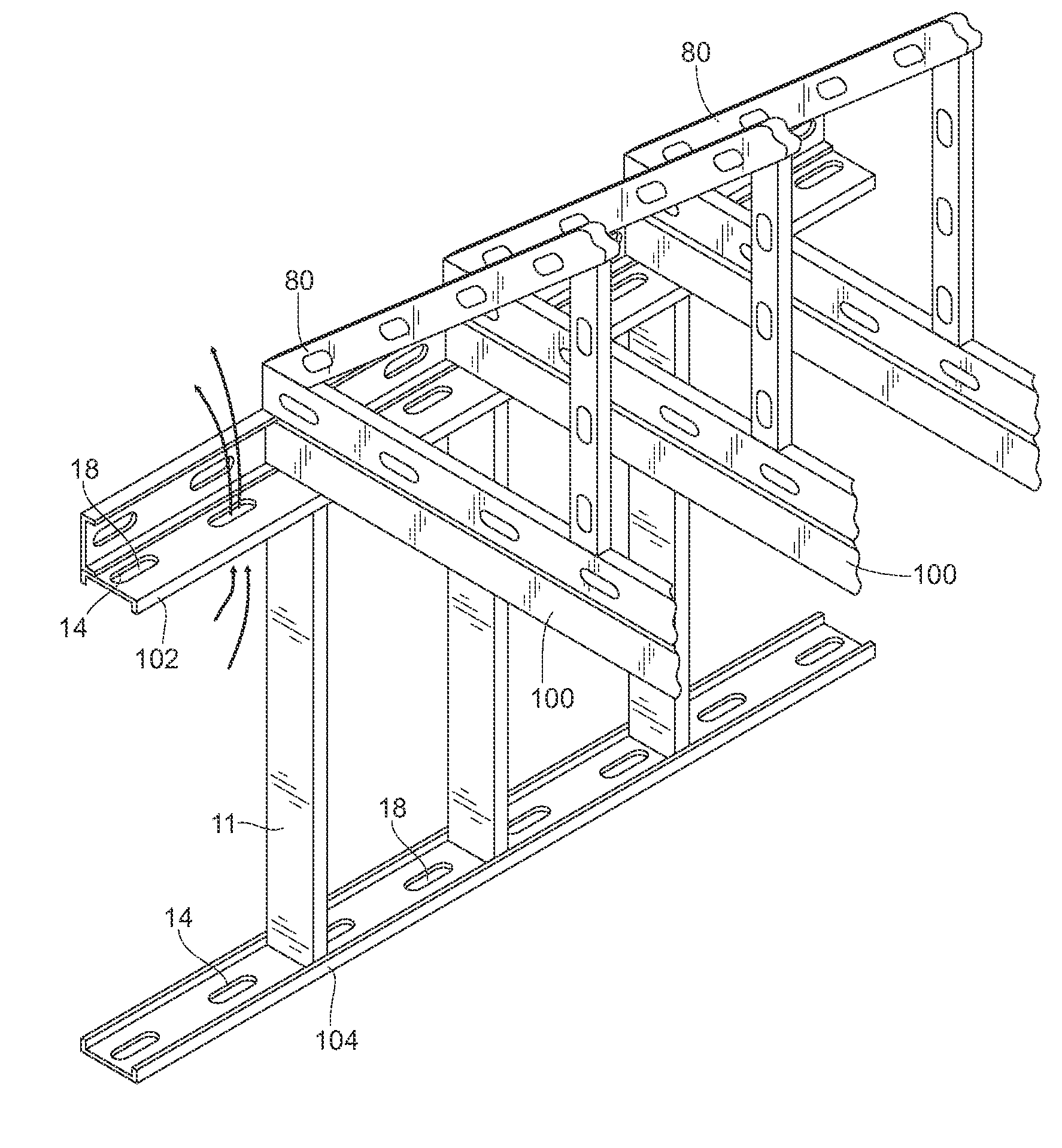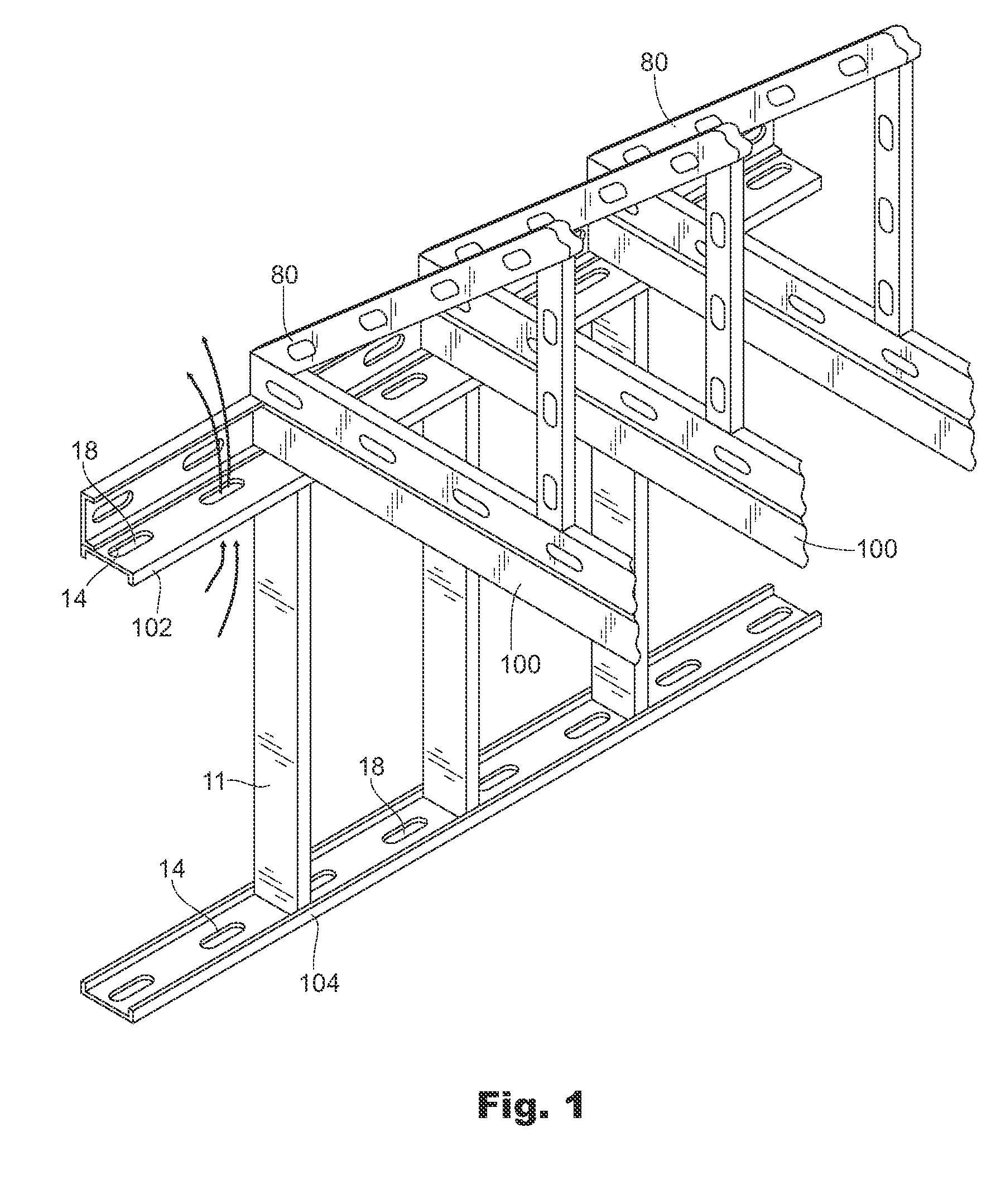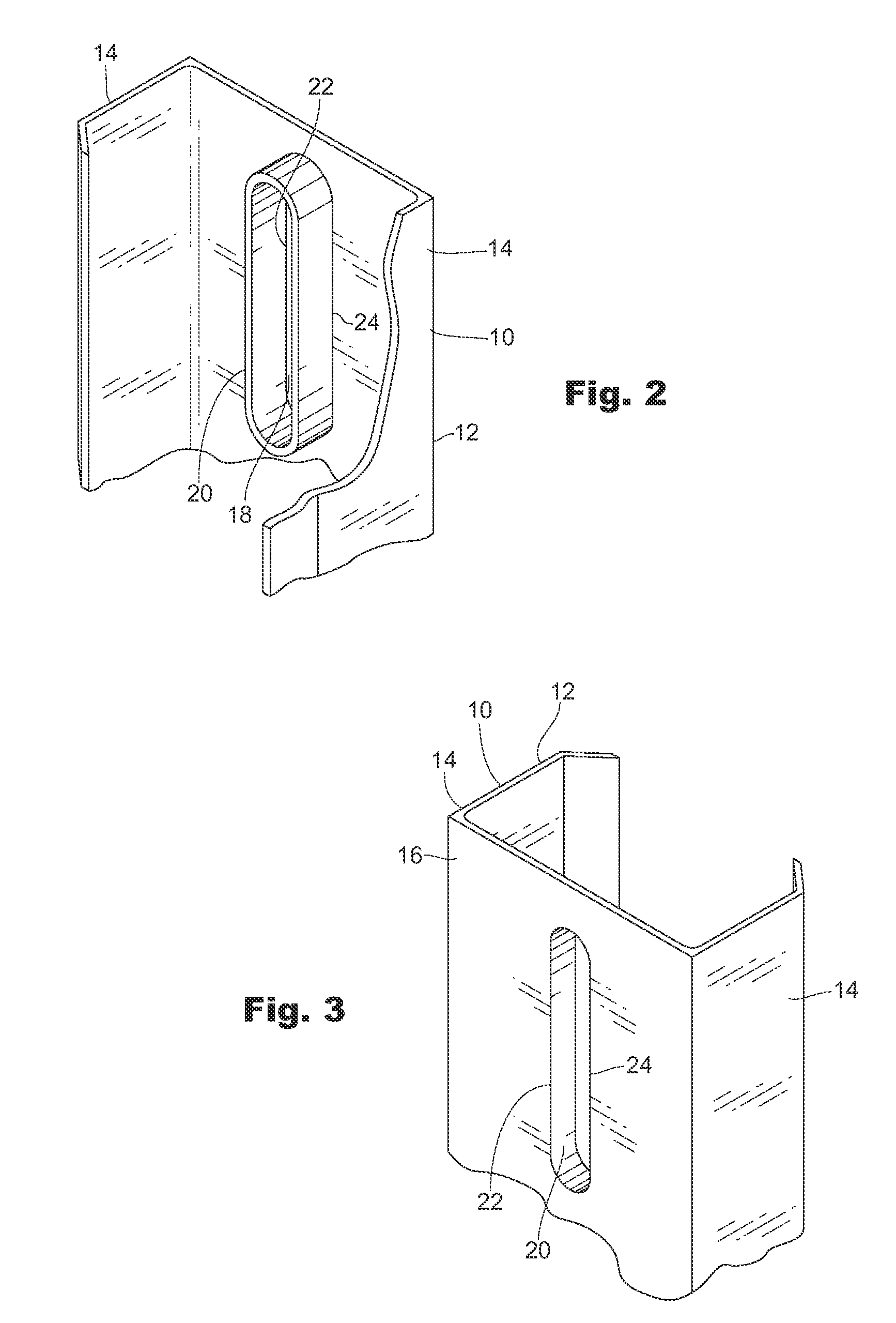Slotted metal truss and joist with supplemental flanges
a technology of supplemental flanges and metal trusses, which is applied in the direction of joists, girders, walls, etc., can solve the problems of buckling (euler or local) probably the most common and most catastrophic, failure becomes catastrophic, and the structure may fail to support a load, so as to improve the resistance to local shear deflection of beams, good conductors, and enhanced structural effects
- Summary
- Abstract
- Description
- Claims
- Application Information
AI Technical Summary
Benefits of technology
Problems solved by technology
Method used
Image
Examples
Embodiment Construction
[0046] The slotted metal beam 10 is intended for use in conventional building construction, such as a stud in a wall, building joists and trusses. In the conventional manner of wall and building construction, a plurality of studs is spaced apart vertically in parallel between horizontal floor joists and ceiling joists 100. Typically, a channel stud header 102 connected to the ceiling joists 100 and opening downward receives upper ends 11 of the studs 10. Similarly, a channel stud footer 104 connected to the floor joists 100 and opening upward receives lower stud ends 13. Because the joists 100 are required to support a lateral, or transverse load, they may be larger and stronger than the studs 10, which support a compressive, or longitudinal load.
[0047] The beam 10 comprises a conventional C-shaped channel 12 including a pair of parallel primary flanges 14 extending a same extent orthogonally from and separated by a web 16. In the preferred embodiment, at least one and preferably a...
PUM
 Login to View More
Login to View More Abstract
Description
Claims
Application Information
 Login to View More
Login to View More - R&D
- Intellectual Property
- Life Sciences
- Materials
- Tech Scout
- Unparalleled Data Quality
- Higher Quality Content
- 60% Fewer Hallucinations
Browse by: Latest US Patents, China's latest patents, Technical Efficacy Thesaurus, Application Domain, Technology Topic, Popular Technical Reports.
© 2025 PatSnap. All rights reserved.Legal|Privacy policy|Modern Slavery Act Transparency Statement|Sitemap|About US| Contact US: help@patsnap.com



